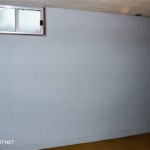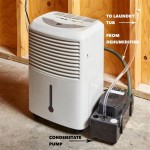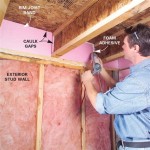Insulating Basement Walls With Foam Board: Essential Aspects
Insulating basement walls with foam board is a cost-effective and efficient way to improve the energy efficiency of your home. By reducing heat loss through the walls, you can lower your heating bills and make your home more comfortable in winter. Foam board insulation also helps to reduce moisture and mold growth in basements, making them healthier and more inviting spaces.
Choosing the Right Foam Board
There are several types of foam board insulation available, each with its own advantages and disadvantages. The most common types of foam board used for basement walls are:
- Extruded polystyrene (XPS) is a rigid foam board that is resistant to moisture and mold. It is also one of the most expensive types of foam board.
- Expanded polystyrene (EPS) is a less expensive type of foam board that is not as resistant to moisture as XPS. However, it is still a good option for basement walls that are not prone to flooding or moisture problems.
- Polyisocyanurate (PIR) is a newer type of foam board that is more expensive than XPS and EPS, but it has a higher R-value (measure of thermal resistance) and is more resistant to fire.
When choosing a foam board for your basement walls, it is important to consider the following factors:
- The R-value of the foam board
- The moisture resistance of the foam board
- The cost of the foam board
Installing Foam Board Insulation
Installing foam board insulation on basement walls is a relatively simple process. The following steps will guide you through the process:
- Prepare the walls. Remove any dirt, debris, or mold from the walls. If the walls are damp, allow them to dry completely before installing the foam board.
- Apply adhesive to the foam board. Use a construction adhesive that is specifically designed for foam board. Apply the adhesive to the back of the foam board in a thin, even layer.
- Install the foam board. Press the foam board into place on the wall, starting at the bottom and working your way up. Make sure that the foam board is level and that there are no gaps between the boards.
- Secure the foam board. Use masonry nails or screws to secure the foam board to the wall. Drive the nails or screws through the foam board and into the wall studs.
- Finish the walls. Once the foam board is installed, you can finish the walls with drywall, paneling, or another type of finish.
- Reduced heat loss. Foam board insulation helps to reduce heat loss through the walls, which can lower your heating bills and make your home more comfortable in winter.
- Reduced moisture and mold. Foam board insulation helps to reduce moisture and mold growth in basements, making them healthier and more inviting spaces.
- Increased home value. Insulating your basement walls can increase the value of your home.
Benefits of Insulating Basement Walls With Foam Board
There are many benefits to insulating basement walls with foam board, including:
If you are looking for a cost-effective and efficient way to improve the energy efficiency of your home, insulating your basement walls with foam board is a great option.

Adding Insulation To Basement Walls Fine Homebuilding

Doe Building Foundations Section 2 1 Insulation

How To Insulate A Basement Wall Greenbuildingadvisor

How To Insulate A Basement With Rigid Insulation Buildwithhalo Com

Etw Foundation 4 Xps Insulation On The Exterior Of Wall Buildingscience Com

How To Insulate Your Basement S Concrete Walls The Seattle Times

Healthy Basement Insulation Systems Quality Built Basements Llc

How To Insulate Basement Walls True Value

Basement Insulation Maryland Northern Va Call Today

Basement Blanket Insulation Building America Solution Center
See Also








